FIAT CURRENCY: A HISTORY OF FAIL
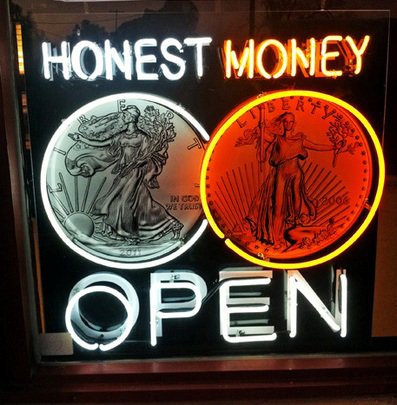
The history of fiat money, to put it kindly, has been one of failure. In fact, EVERY fiat currency since the Romans first began the practice in the first century has ended in devaluation and eventual collapse, of not only the currency, but of the economy that housed the fiat currency as well.
Why would it be different here in the U.S.? Well, in actuality, it hasn’t been. In fact, in our short history, we’ve already had several failed attempts at using paper currency, and it is my opinion that today’s dollars are no different than the continentals issued during the Revolutionary War. But I will get into that in a moment. In the meantime, I will show you that fiat currencies have not been successful, and the only aspect of fiat currencies that have stood the test of time is the inability of political systems to prevent the devaluation and debasement of this toilet paper money by letting the printing presses run wild.
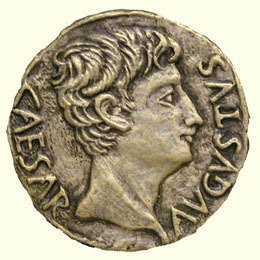
Fiat Money–Rome — The Denarius
Although Rome didn’t actually have paper money, it provided one of the first examples of true debasement of a currency. The denarius, Rome’s coinage of the time, was, essentially, pure silver at the beginning of the first century A.D. By A.D. 54, Emperor Nero had entered the scene, and the denarius was approximately 94% silver. By around A.D.100, the denarius’ silver content was down to 85%.
Emperors that succeeded Nero liked the idea of devaluing their currency in order to pay the bills and increase their own wealth. By 218, the denarius was down to 43% silver, and in 244, Emperor Philip the Arab had the silver content dropped to 0.05%. Around the time of Rome’s collapse, the denarius contained only 0.02% silver and virtually nobody accepted it as a medium of exchange or a store of value.

Fiat Money -China — Flying Money
When the Chinese first started using paper money, they called it “flying money,” because it could just fly from your hands. The reason for the issuance of paper money is simple. There was a copper shortage, so banks had switched to the use of iron coinage. These iron coins became overissued and fell in value.
In the 11th century, a bank in the Szechuan province of China issued paper money in exchange for the iron coins. Initially, this was fine, because the paper money was exchangeable for gold, silver, or silk. Eventually, inflation began to take hold, as China was funding an ongoing war with the Mongols, which it eventually lost.
Genghis Khan won this war, but the Mongols didn’t assume immediate control over China as they pushed westward to conquer more lands. Genghis Khan’s grandson Kublai Khan united China and assumed the emperorship. After running into some setbacks with paper currency, Kublai eventually had some success with fiat money. In fact, Marco Polo said of Kublai Khan and the use of paper currency:
“You might say that [Kublai] has the secret of alchemy in perfection…the Khan causes every year to be made such a vast quantity of this money, which costs him nothing, that it must equal in amount all the treasure of the world.”
Even Helicopter Ben would be impressed. Marco Polo went on to say:
“This was the most brilliant period in the history of China. Kublai Khan, after subduing and uniting the whole country and adding Burma, Cochin China, and Tonkin to the empire, entered upon a series of internal improvements and civil reforms, which raised the country he had conquered to the highest rank of civilization, power, and progress.”
Wait a second, I thought we were bashing fiat currencies here…Can anyone say crackup boom? Since Marco Polo experienced this firsthand, and has been very helpful to us thus far, I think I will allow him to finish his analysis of China’s paper money experiment.
“Population and trade had greatly increased, but the emissions of paper notes were suffered to largely outrun both…All the beneficial effects of a currency that is allowed to expand with a growth of population and trade were now turned into those evil effects that flow from a currency emitted in excess of such growth. These effects were not slow to develop themselves…The best families in the empire were ruined, a new set of men came into the control of public affairs, and the country became the scene of internecine warfare and confusion.”
I wonder if Keynes read Marco Polo’s experiences with Chinese fiat currencies when he said that the U.S. government should just bury bottles full of money in old mine shafts to spur economic growth.
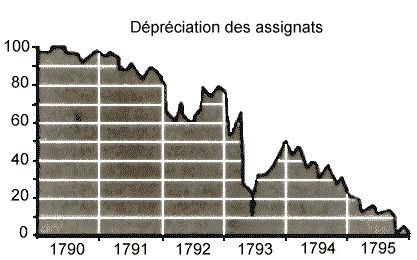
Fiat Money -France — Livres, Assignats, and Francs
The French have been particularly unsuccessful in their attempts with fiat money.
John Law was the first man to introduce paper money to France. The notion of paper money was greatly helped along by the passing of Louis XIV and the 3 billion livres of debt that he left.
When Louis XV was old enough to make his own mistakes, he required that all taxes be paid in paper money. The currency was backed by coinage…until people actually wanted coins.
The theme of the day…the new paper currency rapidly became oversupplied until nobody wished to own the worthless junk anymore and demanded coinage for their currency.
Oops. It looks like Law didn’t think that anyone would actually want coins ever again. After making it illegal to export any gold or silver, and the failed attempts by the locals to exchange their paper currency for something of actual value, the currency collapsed.
John Law became the most hated man in France and was forced to flee to Italy.
In the latter part of the 18th century, the French government again tried to give paper money another go. This time, the pieces of garbage they issued were called assignats. By 1795, inflation of assignats was running at approximately 13,000%. Oops.Then Napoleon stepped on the scene and brought with him the gold franc. One of the good things that Napoleon realized is that gold is the way of a stable currency, and that’s what pretty much ensued during his reign.
After Waterloo had come and gone, the French gave it another go in the 1930s, this time with the paper franc. It took only 12 years for them to inflate their currency until it lost 99% of its value. History has proven a couple things about the French: 1) They are quick to surrender and 2) They are very talented at making worthless currency.

Weimar Germany — Mark
Post-World War I Weimar Germany was one of the greatest periods of hyperinflation that ever existed. The Treaty of Versailles was essentially a financial punishment placed on Germany to make reparations.
The sums of money to be paid by Germany were enormous, and the only way it could make repayment was by running the printing press. (Huge unpayable debt — that sounds familiar. I wonder what the solution in the U.S. will be.)
Inflation got so bad in this period that German citizens were literally using stacks of marks to heat their furnaces. Here is a brief timeline of the marks per one U.S. dollar exchange rate:
*April 1919: 12 marks
November 1921: 263 marks
January 1923: 17,000 marks
August 1923: 4.621 million marks
October 1923: 25.26 billion marks
December 1923: 4.2 trillion marks*
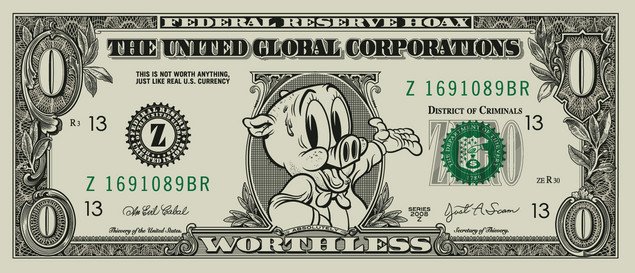
Fiat Money -More Recent Times
In recent times, fiat failures have become more common occurrences. For the sake of time, I won’t go into extensive details of all these examples of paper money failures, because there are SO many. But here you have it:
In 1932, Argentina had the eighth largest economy in the world before its currency collapsed. In 1992, Finland, Italy, and Norway had currency shocks that spread through Europe.
In 1994, Mexico went through the infamous “Tequila Hangover,” which sent the peso tumbling and spread economic hardships throughout Latin America.
In 1997, the Thai baht fell through the floor and the effects spread to Malaysia, the Philippines, Indonesia, Hong Kong, and South Korea.
The Russian ruble was not the currency you wanted your investments denominated in in 1998, after its devaluation brought on economic recession. In the early 21st century, we have seen the Turkish lira experience strokes of hyperinflation similar to that of the mark of Weimar Germany.
In present times, we have Zimbabwe, which was once considered the breadbasket of Africa and was one of the wealthiest countries on the continent. Now Mugabe’s attempts at price controls, combined with hyperinflation, have the nation unable to supply the most basic essentials such as bread and clean water.
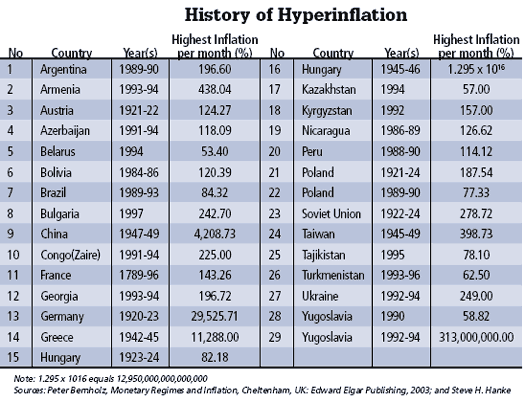
Fiat Money -Lessons to Be Learned
Here in the U.S., I should say the lessons were not learned. There are many consistencies from the above-mentioned stories that led up to the eventual collapse of the currencies.
The scary thing is that the U.S. has some of these above-mentioned characteristics, the ones that lead to toilet paper money becoming just that. More on that in just a second. I would first like to give a brief look at the U.S. attempts with paper money in our short history.
The first attempt with paper money came in 1690 with the issuance of Colonial notes. The first Colonial notes were issued in Massachusetts and were redeemable for gold, silver, corn, cattle and other commodities.
The other Colonies quickly jumped on the toilet paper money bandwagon and began issuing their own paper currencies. Like a broken record, the money quickly became overissued. The lessons of John Law and others were definitely not learned. It is not good enough just to say that a currency is backed by commodities. It actually HAS to be backed by commodities. Essentially, it was still a fiat money, and in a short period of time, Colonials became as good as toilet paper.
The next experiment came during the Revolutionary War. Big surprise — the issuance of paper money was used to finance the war efforts. This time, the currency was called a continental.
The crash of the continental was spectacular, and the phrase “not worth a continental” was coined. This brought on a large distrust for paper currency, and until 1913, toilet paper money in the U.S. wasn’t used. Enter the infamous Federal Reserve and its monopoly on money and interest rates. Now we have the greenback.
Although the money was “officially” backed by a gold standard until 1971, it wasn’t a true gold standard. When the government found it inconvenient to have a gold standard, it just made it illegal for U.S. citizens to hold gold or exchange dollars for gold.
As reported on Strike-the-root.com:
“Under the infallible leadership of President Franklin Roosevelt, it was made illegal to own gold. On March 11, 1933, he issued an order forbidding banks to make gold payments. On April 5, Roosevelt ordered all citizens to surrender their gold — no person could hold more than $100 in gold coins, except for collector’s coins. He also made it unlawful to export gold for payment abroad, unless done through the Treasury. The penalty for defying Roosevelt was 10 years in prison and a $250,000 fine.”
But the official demise of the dollar was locked into place in 1971 when “Tricky Dick” Nixon completely severed all ties between the dollar and the gold standard. During the decade that followed, the U.S. experienced some of the worst inflation in its history, only matched by today’s U.S. monetary and fiscal irresponsibility.
The U.S. of A. has all the characteristics set in place that have led to the collapse of every other fiat currency money in history.
We are currently at war, and the financing of this war is extremely inflationary. In fact, if you look back at our history, since 1914, the U.S has engaged in 16 military conflicts. We have been involved in some form of violent international accord in 44 of the past 93 years. The overwhelming majority of military conflicts result in monetary inflation.
The U.S. has a debt similar to that of Weimar Germany. All though the reasons for the debt are completely different, it appears thatthis Mount Everest of IOUs is going to be impossible to pay back. I guess the U.S. could just print 10 trillion dollar bills and hand them out, but the implications of such actions are obvious.
We are currently increasing the supply of dollars at a rate of 13% per annum. This overissuance of a currency has been the leading indicator of a currency on the brink.
So what’s in the future for the dollar?
Some, myself included, might say that the dollar has already failed. It has lost over 92% of its value since its initial issuance in 1913. After the revaluation in 1934, the dollar dropped another 41%. In my opinion, it already is toilet paper money, but for the above-mentioned characteristics, which are alarmingly similar to the circumstances that led up to the eventual collapse of the dollar’s toilet paper predecessors, I believe that we have seen only the tip of the iceberg of the dollar’s inevitable path toward becoming toilet paper money.
This is a great article. Happy to share on Twitter and follow and read your posts. Cheers. Stephen